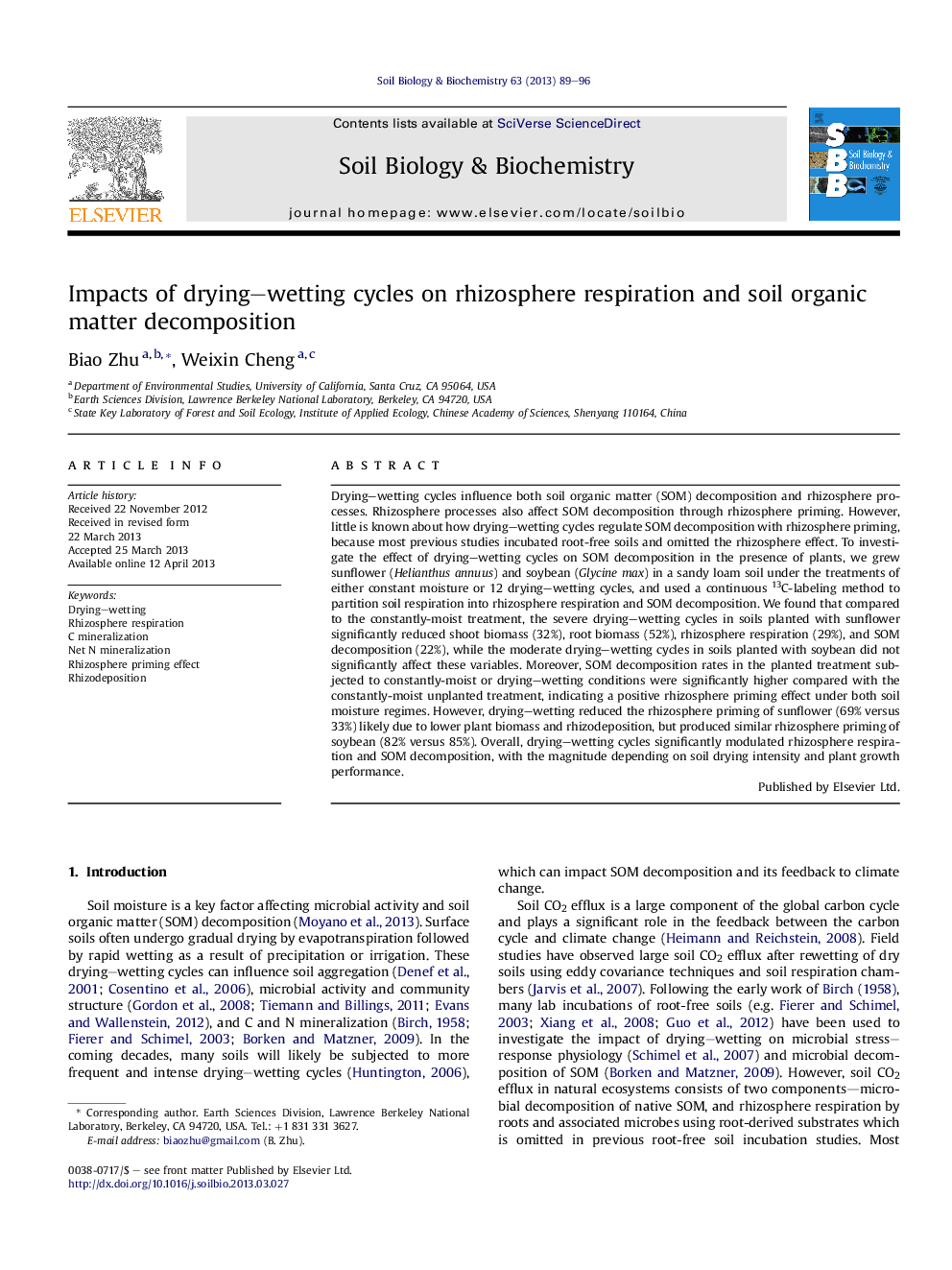| Article ID | Journal | Published Year | Pages | File Type |
|---|---|---|---|---|
| 2024811 | Soil Biology and Biochemistry | 2013 | 8 Pages |
•Severe soil drying–wetting with sunflower plants reduced soil C decomposition.•Moderate drying–wetting with soybean plants did not affect soil C decomposition.•Autotrophic and heterotrophic respiration responded similarly to drying–wetting.•Drying–wetting reduced rhizosphere priming of sunflower, but not of soybean.•Drying–wetting modulates soil C mineralization via rhizosphere interactions.
Drying–wetting cycles influence both soil organic matter (SOM) decomposition and rhizosphere processes. Rhizosphere processes also affect SOM decomposition through rhizosphere priming. However, little is known about how drying–wetting cycles regulate SOM decomposition with rhizosphere priming, because most previous studies incubated root-free soils and omitted the rhizosphere effect. To investigate the effect of drying–wetting cycles on SOM decomposition in the presence of plants, we grew sunflower (Helianthus annuus) and soybean (Glycine max) in a sandy loam soil under the treatments of either constant moisture or 12 drying–wetting cycles, and used a continuous 13C-labeling method to partition soil respiration into rhizosphere respiration and SOM decomposition. We found that compared to the constantly-moist treatment, the severe drying–wetting cycles in soils planted with sunflower significantly reduced shoot biomass (32%), root biomass (52%), rhizosphere respiration (29%), and SOM decomposition (22%), while the moderate drying–wetting cycles in soils planted with soybean did not significantly affect these variables. Moreover, SOM decomposition rates in the planted treatment subjected to constantly-moist or drying–wetting conditions were significantly higher compared with the constantly-moist unplanted treatment, indicating a positive rhizosphere priming effect under both soil moisture regimes. However, drying–wetting reduced the rhizosphere priming of sunflower (69% versus 33%) likely due to lower plant biomass and rhizodeposition, but produced similar rhizosphere priming of soybean (82% versus 85%). Overall, drying–wetting cycles significantly modulated rhizosphere respiration and SOM decomposition, with the magnitude depending on soil drying intensity and plant growth performance.
